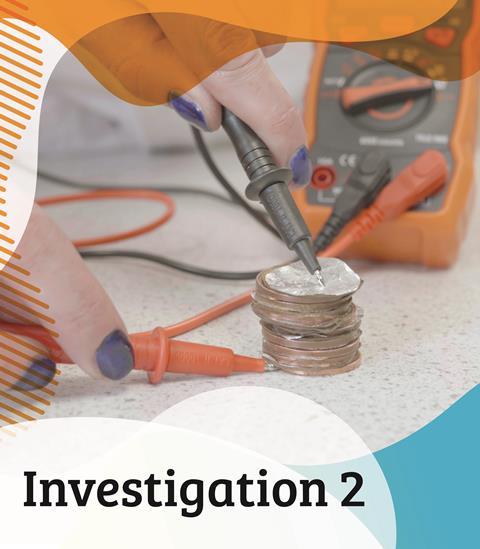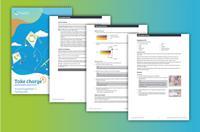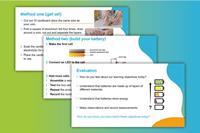Investigation 1
All the support you need to join in with investigation 1, whether you are planning for your class or joining in at home
Teaching and learning resources
We have a full set of teaching notes to support you, as well as instructions for learners available in PDF or as PowerPoint slides for use in the classroom. Instructions for carrying out the investigation are included in both, and you may find it useful to watch this video with step-by-step guidance for doing the investigation.
Link to literacy with the battery power worksheet (also available in PDF) to find out more about battery research and development from the past to the present day.
Equipment
To take part in investigation 1, each group will need:
- 10 coins or washers (of the same size)
- 1 LED
- vinegar
- aluminium foil
- cardboard
- scissors
- pen
- 2 dishes
- sticky tape (optional)
- tweezers (optional)
Learning objectives
- Understand that batteries are made up of layers of different materials.
- Understand that batteries store energy.
Enquiry skills
- Accurately follow instructions and carry out a practical investigation.
- Make careful observations throughout and, where relevant, take and record accurate measurements.
- Ask questions based on observations and results.
Record and submit your data
Once you have completed your investigation don’t forget to share your results and see how they compare with others around the world.
FAQs
Here are some frequently asked questions about this investigation. Don’t see your question here? Let us know and we will do our best to add it to the list.
1. Do batteries store electricity?
Batteries don’t store electricity, they store energy. The rate at which the LED emits light depends on how quickly energy is transferred from the chemical energy store of the battery.
2. Can you use other metals as the electrodes?
Yes, as long as the electrodes are made of different metals you can use almost any metal.
3. Are there other electrolytes you can use?
Yes, lemon juice works well and you could use a carbonated drink too.
4. What else can you make a battery out of?
You can make good batteries out of citrus fruits where the juice inside acts as the electrolyte. You can also make a battery out of a potato.
5. Is this how ‘real’ batteries work?
Pretty much yes, the electrolyte and materials for the electrodes vary but the basic principle is the same.
6. Why does the battery run out?
Batteries ‘run out’ when one of the chemicals taking part in the reactions has fully reacted and is no longer available.
7. How do rechargeable batteries work?
A rechargeable battery works in the same way as a coin cell when being used (eg to light an LED). However, the chemicals inside are different. When they ‘run out’ they can be connected to a charger to reverse the chemical reactions and ‘recharge’ them.
8. Could we get a shock if we made a really high stack?
If you make a voltaic pile with more than 10 cells it is possible to get a small electric shock from it. This is how Alessandro Volta originally measured how powerful his batteries were, by giving himself electric shocks.







